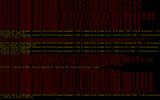Hello Everyone,
Our development team has been super busy qualifying Veeam integration for our Proxmox customers.
Using internal tools designed to test the integrity of snapshots, we're seeing that Veeam 12.2 backups of live virtual machines contain silent data corruption and that the backups are not "point in time" consistent.
We can reliably reproduce the issue with LVM, ZFS, and other backing storage (including Blockbridge). The issue does not reproduce on PBS.
Is anyone else seeing this? Is anyone else out there testing their backups? @Pavel Tide is this a known issue?
Blockbridge : Ultra low latency all-NVME shared storage for Proxmox - https://www.blockbridge.com/proxmox
Our development team has been super busy qualifying Veeam integration for our Proxmox customers.
Using internal tools designed to test the integrity of snapshots, we're seeing that Veeam 12.2 backups of live virtual machines contain silent data corruption and that the backups are not "point in time" consistent.
We can reliably reproduce the issue with LVM, ZFS, and other backing storage (including Blockbridge). The issue does not reproduce on PBS.
Is anyone else seeing this? Is anyone else out there testing their backups? @Pavel Tide is this a known issue?
Blockbridge : Ultra low latency all-NVME shared storage for Proxmox - https://www.blockbridge.com/proxmox
Last edited:


